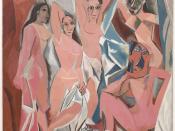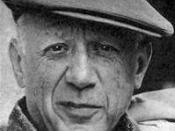Name: Toh Lai Hee
Class: IA06A (Interactive)
Subject: Representations
Cubism is one of the first forms of abstract art. Cubism was a movement in painting that sought to break down objects into basic shapes of cubes, spheres, cylinders, and cones.
Cubism originated in France and was influenced by African sculptures and by Paul Cezanne (Cezanne was one of the greatest Post-Impressionists). The first cubist works were those in which objects, landscapes, and people are represented as many-sided solids. This enables you to see various views of the object at the same time. Later, cubism changed using a flatter type of abstraction, in which the complete pattern, becomes more important, and the objects represented are largely indecipherable.
At first, most artists painted with little color. Most paintings were either monochromatic or gray, blue, brown, and white." The final phase of cubism is called synthetic. In this phase, color reappears as a primary element in the artwork.
Cezanne was an artist who led the way to cubism or abstract art. Before Cezanne, artists would portray the world realistically. It is above all Cezanne's obsession with formal elements of composition and his use of color as tone rather than the Impressionist pursuit of light on surface that makes his art so important to those who followed. Cezanne's works made it possible for artists to start to question what they saw, the way in which they saw it, and how they interpreted and represented what was in front of them. Cezanne felt that paintings should reflect artist's sensations made into a pictorial form by brush strokes, color, and lines. He was known to work slowly and use colors to build shapes. In the still-life pictures that he made of fruits and bowls one can tell that he worked slowly as there are different and...


